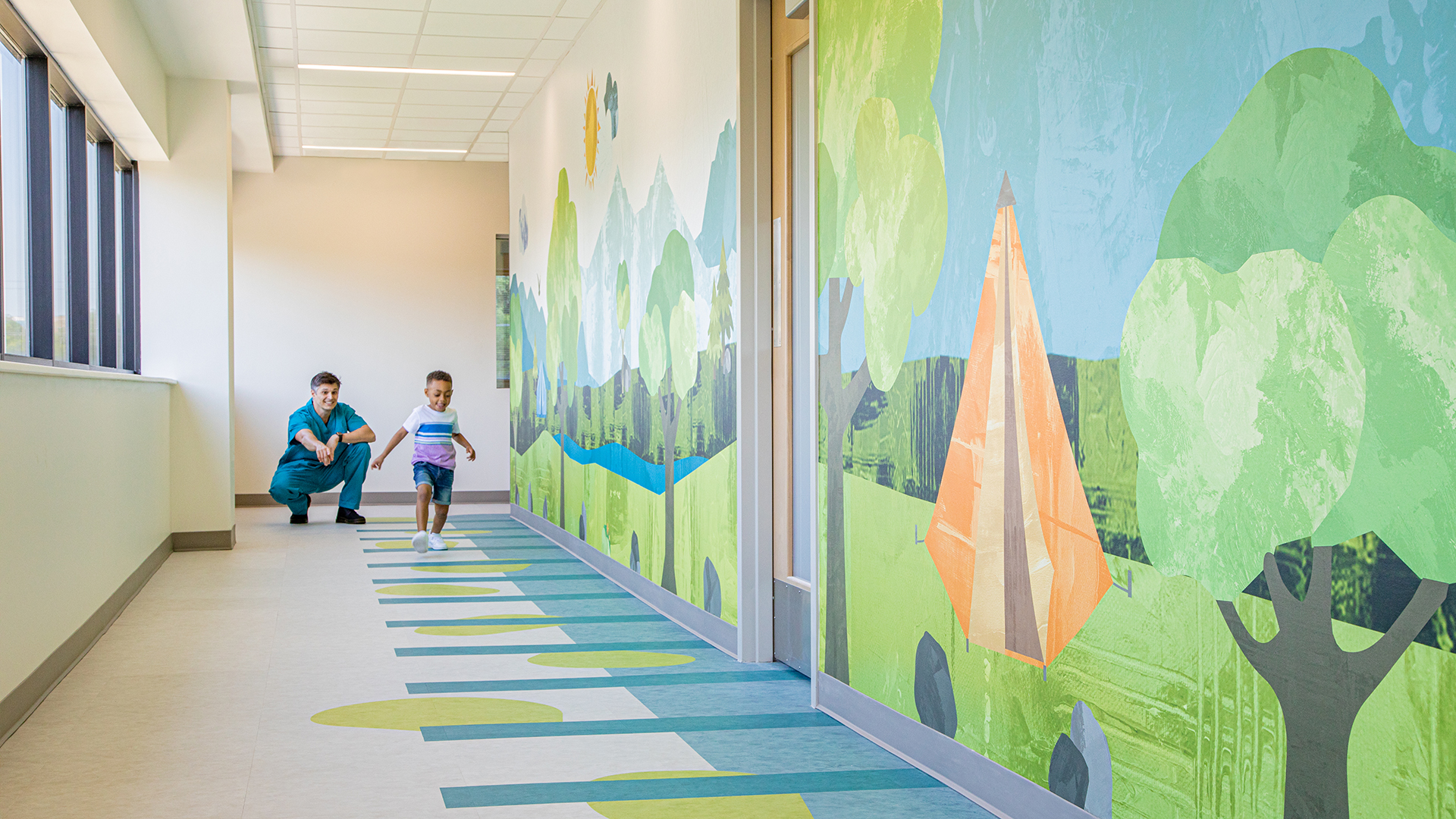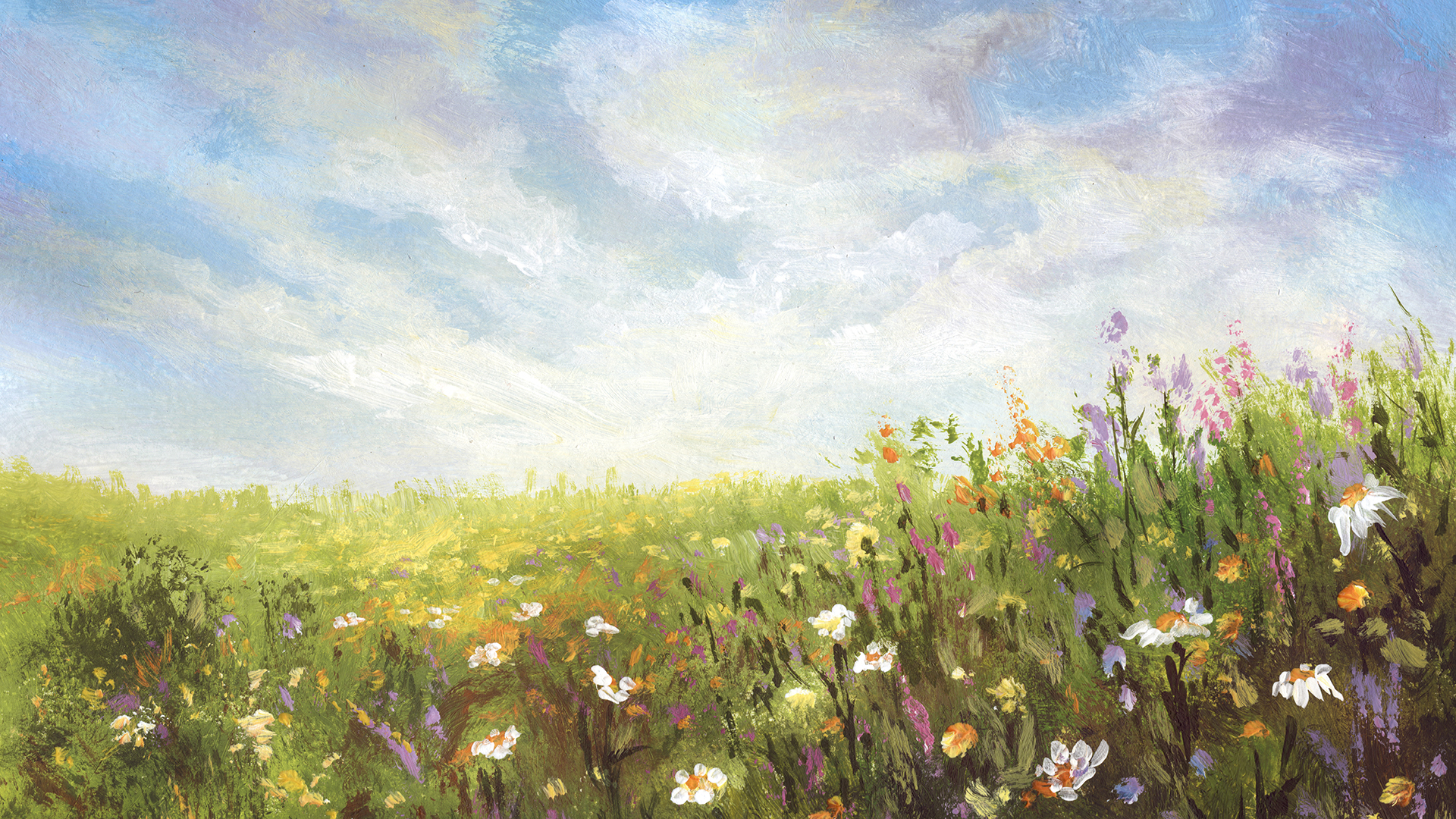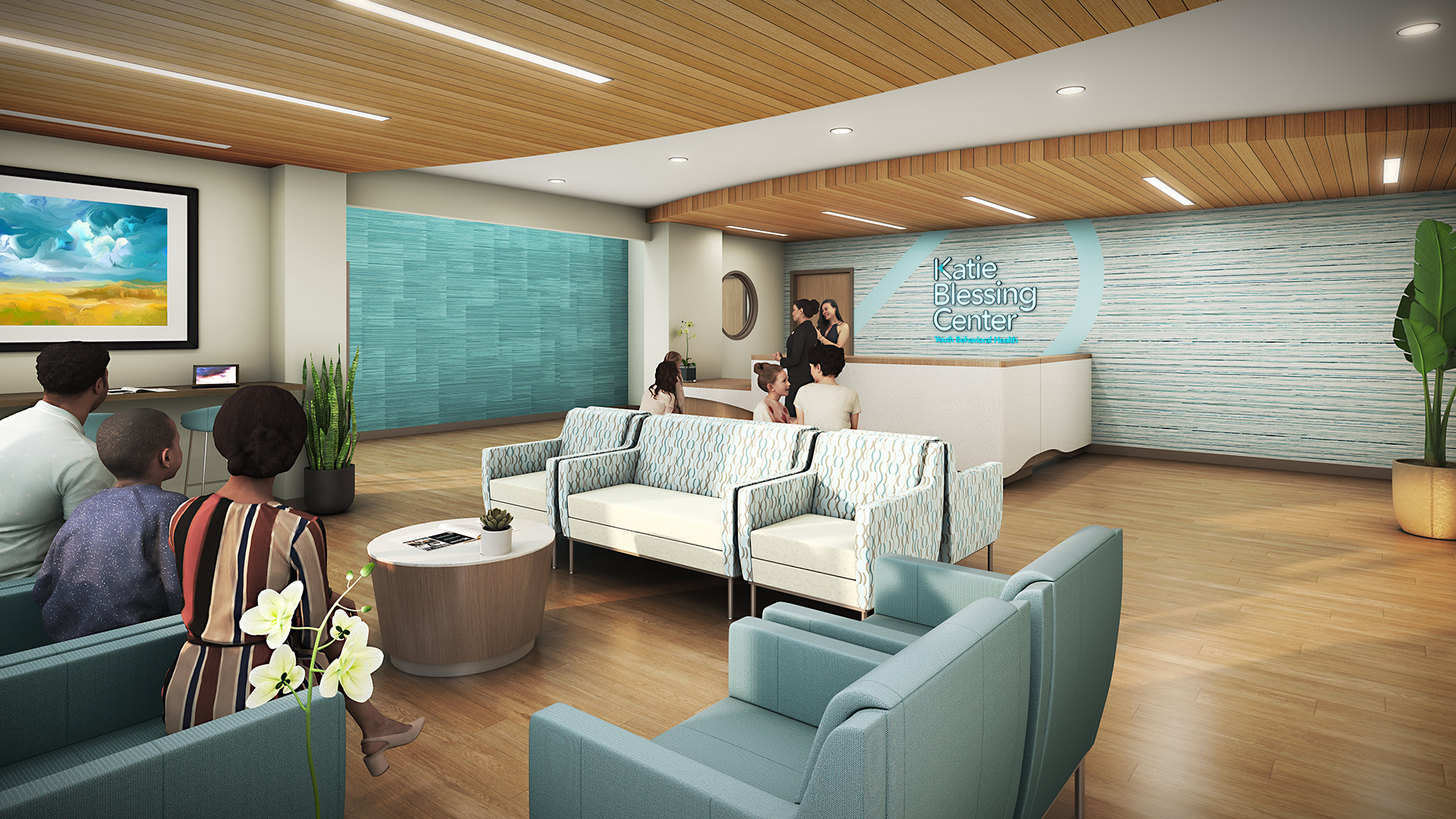Art has long been acknowledged as having a positive impact on healthcare environments. From its creation in therapy programs or simply by the experience of seeing inspiring images or hearing uplifting music, art is essential in designing hopeful, healing spaces. While most research has focused on art in acute healthcare settings—facilities where patients receive short-term treatment for severe injuries or illnesses, urgent medical conditions, or after surgery—the increased awareness of mental health post-COVID demands a closer examination of the art used in behavioral and mental health environments.
The therapeutic qualities of art have been proven effective in behavioral health in-patient environments, offering avenues for expression, inspiration, and hope. Studies show that art can help disrupt negative thoughts and emotions by providing visually stimulating and calming environments, fostering a sense of safety and well-being.
However, art in behavioral health environments differs from that in hospitals or clinical settings in its application, installation, style, and subject matter. For instance, in behavioral and mental health facilities, artwork must be installed where staff can easily see it, avoiding alcoves or corners away from nurses’ stations. This direct line of sight enhances patient observation, not only offering insights into their emotional well-being but enables prompt intervention for safety and security. Let’s examine a few strategic approaches to art selection and installation when designing mental health facilities.

EFFECTIVE METHODS FOR ART INSTALLATION
Various methods are used to integrate artwork into behavioral and mental health facilities, each with its own considerations for safety, durability, and aesthetic appeal. Let’s explore three of the most common applications.
Direct Application
Direct application refers to applying the artwork directly to the wall surface using graphic vinyl wall coverings or painted murals. After that, the vinyl should be sealed with a clear sealer to protect the artwork and limit access to the wall. Attach a composite molding to the wall to give the direct application a framed look.
Framed Artwork
Artwork can be framed using carefully considered materials and installation methods prioritizing safety and durability. Frames should have rounded, beveled edges and be made with Lexan shatter-proof substrate instead of glass to safeguard the artwork and the people within the environment. Frames should be mounted flush to the wall using counter-sunk, tamper-proof screws and sealed with silicone along the edges.
Printed Acrylic
Images can be printed directly onto acrylic, reducing the need for extra framing materials. The edges of the piece are beveled and attached directly to the wall with counter-sunk tamper-resistant screws. To prevent tampering, seal edges with clear caulk or silicone, similar to framed artwork.
ART THEMES TO AVOID
When creating spaces for behavioral health facilities, it’s crucial to consider how artwork can affect patients’ well-being. Certain subjects should be avoided in art intended for behavioral health settings, such as:
- Violent or aggressive imagery
- Dark or disturbing themes
- Triggering or traumatic subjects
- Overly stimulating or chaotic artwork
- Intrusive or intricate patterns
- Isolating or lonely imagery
- Predatory animals and birds
- Repeating patterns in abstract art
In all healthcare settings, it’s generally advised to avoid displaying art with intense reds, dark blues, grays, greens, and blacks. In behavioral health environments, reds may provoke violence and anger, while blacks can evoke feelings of dread and loneliness. For children’s behavioral health spaces, overly stimulating colors should be avoided, such as bright neon hues which can be overwhelming or distracting. However, in select situations these colors can engage children effectively.

RECOMMENDED ART THEMES
Instead, choose artwork that evokes a sense of serenity, comfort, and security. Studies have shown using the following styles and subjects aid in reducing stress levels and blood pressure while increasing serotonin in the brain. When selecting the art themes, consideration should also be given to the illness being treated and its relation to the artwork’s physical placement and subject matter.
NATURE
Nature scenes are often the preferred subject matter of artwork displayed in behavioral health environments. These could include photographs, paintings, or other forms of media, sized to scale or slightly smaller, that capture the beauty of flowers in bloom, sunsets on the horizon, and landscapes depicting peaceful meadows and tranquil lakes. Such artworks have been found to have a calming effect on patients, reducing stress and anxiety while evoking feelings of gratitude and mindfulness.
ABSTRACT
Abstract art can be used in behavioral health settings if thoughtfully selected. Soothing colors and gentle forms can create a sense of wonder and encourage patients to interpret the artwork in their own way. Additionally, abstract art can serve as a conversation starter during therapy sessions. Patients may be able to express their emotions and thoughts through the artwork, leading to meaningful discussions and insights.
WHIMSY
Nature scenes are a popular choice for art used in children’s behavioral health as they evoke similar emotions in children as adults. However, adding playful and whimsical elements such as animals and fantasy landscapes can stimulate children’s imagination and creativity. The artwork should be colorful and vibrant, capturing the joy and wonder of childhood. Abstract and expressive art can also be used, albeit sparingly so as not to overstimulate.
COLOR
When choosing artwork for behavioral health environments, the color palette of the piece plays a significant role. Paintings, prints, and photographs that feature colors reminiscent of spring and summer, calming blues and greens, pastels, and warm, comforting tones can help promote calmness, comfort, and safety.
In behavioral health environments for children, colors that soothe and stimulate are often combined. Soft pastels create a nurturing atmosphere that doesn’t overwhelm the senses, while bright colors like lime green add energy and vitality. While primary colors can evoke a sense of playfulness, they should be used in moderation.
In summary, the careful selection of artwork for behavioral and mental health facilities is crucial in the promotion of healing and well-being. By thoughtfully considering the themes, styles, and colors of artwork, these facilities can create environments that support healing, facilitate recovery, and promote well-being for patients of all ages.

